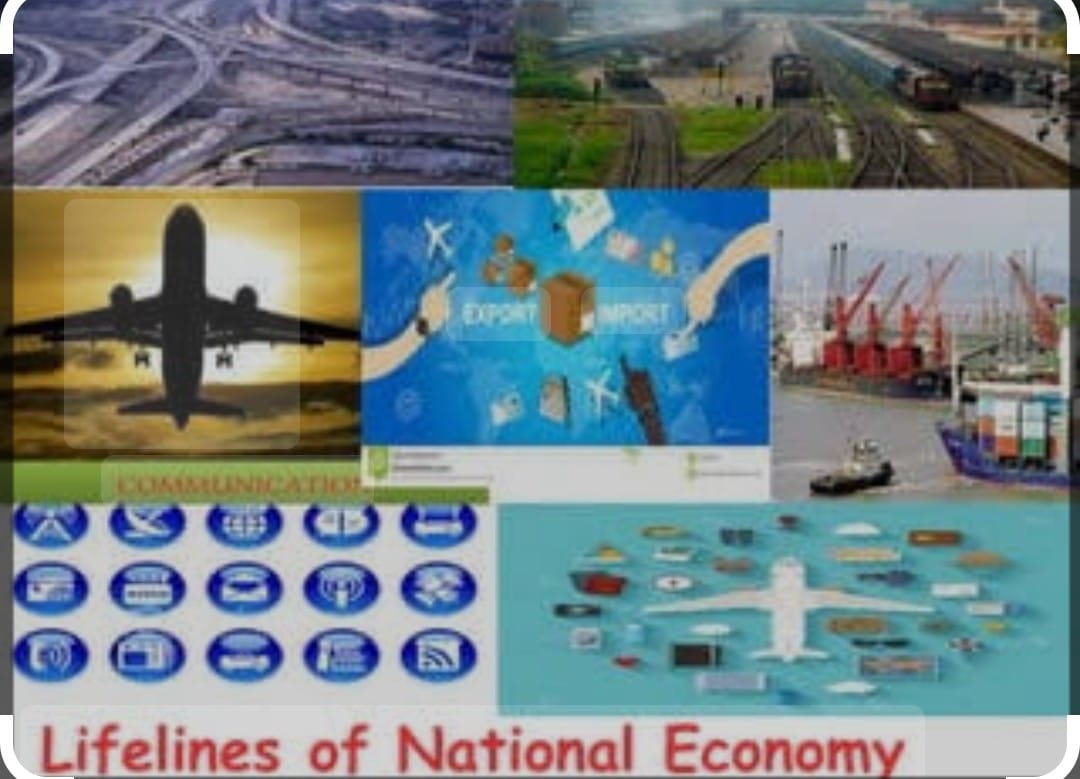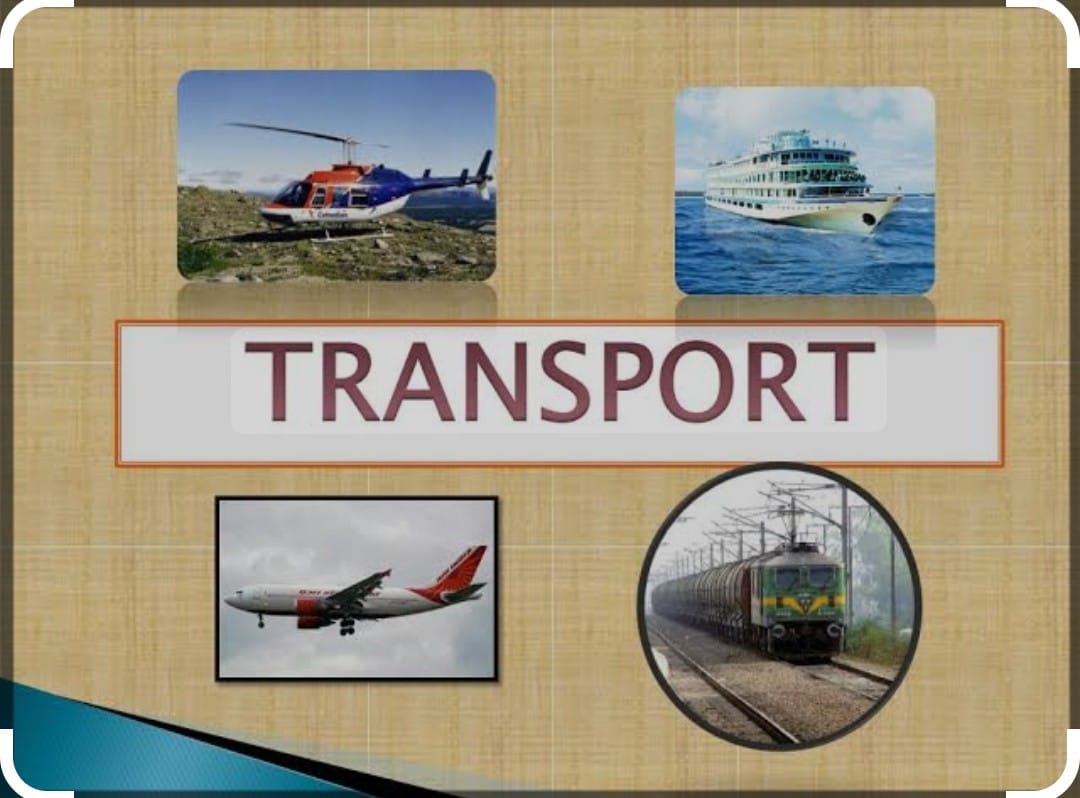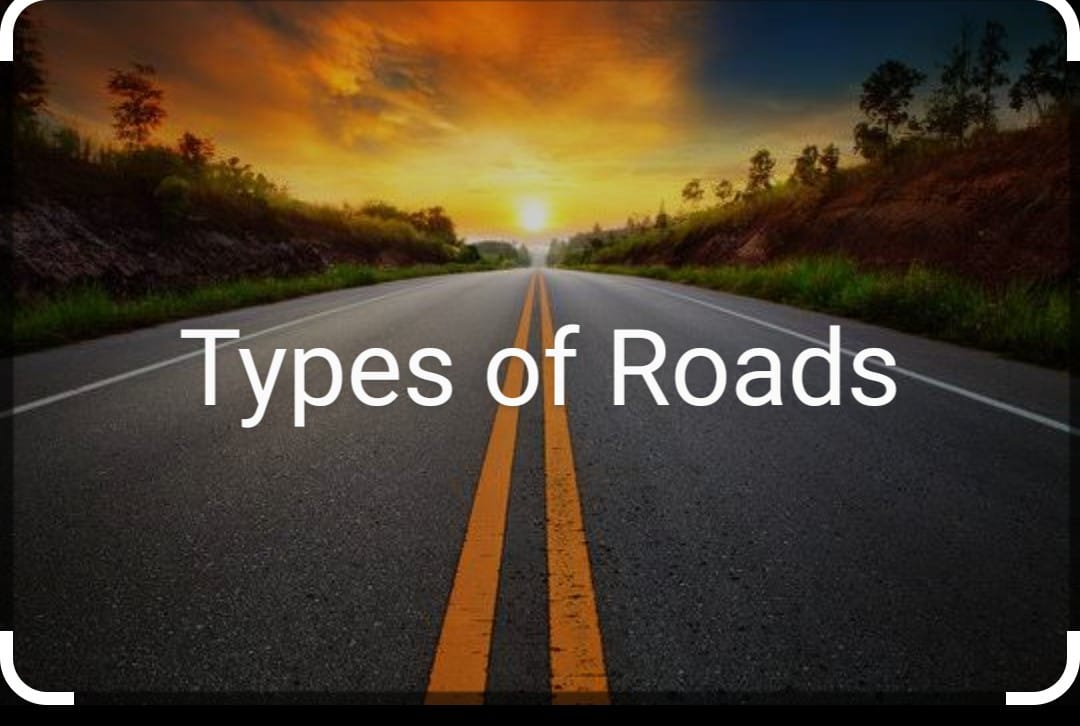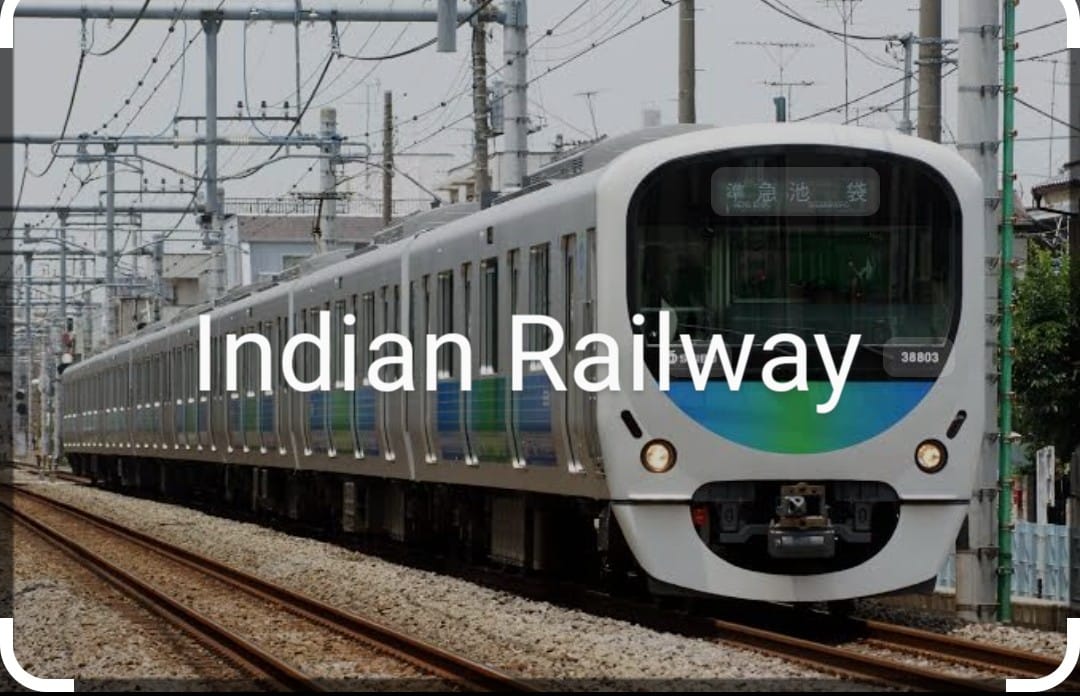Life Line of National Economy
Life Line of National Economy is the Chapter from Social Science that Cover the Syllabus of Class !0 which gives the basic idea of important elements of our economy which play important role of developing the Indian Economy.

Transportation:
India’s road, rail, port, and air transport networks are crucial for economic activities. The government has launched initiatives like Bharat Mala, Sagar Mala, and the National Infrastructure Pipeline (NIP) to enhance infrastructure.
Power generation and distribution are vital for industrial and household use. India is investing in renewable energy sources like solar and wind, aiming to meet its growing energy demands sustainably.
The rapid urbanization of India has led to increased focus on smart cities, housing, and urban infrastructure. Schemes like AMRUT and the Smart Cities Mission are part of this effort.

Transportation and communication is the main life line of our national economy which helps in making the movement of people and goods easy from one place to another across the country as well as outside .
It enhances the trade and commerce within country. It has helped to reduce the distance and brought the world closer. It increases the co-operation and assistance between the countries.
The growing importance of road transport because
i) construction cost of roads is much lower than railways.
ii) roads can transverse comparatively more dissected and undulating topography
iii) roads can be built at higher mountainous aera .
iv ) road transport takes fewer persons and smaller amount of goods to short distance v) provide door to door service low cost of loading and unloading
vi) It act as a feeder to other modes of transport services.

ROADWAYS:
India has one of the largest road networks in the world of about 62.16 lakh km. The roads in India are classified into 6 category
a) GOLDEN HIGHWAYS:
It is a six Highway which connects DELHI- KOLKATA-CHENNAI -MUMBAI – DELHI. The north south corridors linking SRINAGAR (Jammu and Kashmir) to KANYAKUMARI (Tamil Nadu) the longest NH-44 running about 4112 km the east to west corridors connecting SILCHE (Assam) to PORBANDAR (Gujarat) between the major objective of these superhighways is to reduce the time and distance the between mega cities of our country. These highways projects are being implemented by NHAI (National Highway Authority of India)
b) NATIONAL HIGHWAYS:
It links the extreme parts of the country, primary road system, these are constructed by CPWD means Central Public Works Department. There are 599 national highways in India.
c ) STATE HIGHWAYS:
It links state capital with different districts headquarters constructed and maintained by Public Works Department (PWD)
d) by Gram DISTRICTS ROADS:
It establish link between districts headquarters with other places of districts maintained by Zila Parishad.
e) OTHER ROADS; These roads link the rural aera and village with towns maintained by Grameen Sadak Yojana.
f) BRODER ROADS: These roads are constructed at the border aera of the country and maintained by government of India undertaken by Broder Road Organisation which was established in 1960 for the development of roads with strategic importance in the north sand north east border aera of difficult terrain and help in the economic growth.
We ae facing lots of problems in the road sector the main are that most of the road have insufficient infrastructure ,roads of village and rural are poorly maintain and having lack of all weather roads that we can see the poor condition of roads during rainy season. Next major problem is the congestions on roads due to rapid urbanization we face problem of traffic jams in cities .
There is inadequate road capacity compared to the vehicle growth on the roads. There is poor enforcement of traffic rules which is the main cause of high rate of road accidents. Due to strict law of Land acquisition government had to face lots of problems in acquiring the land for new roads therefore it costs overrun .There is insufficient investment in this sector because government is fail to attract the private investment.

RAILWAY:
Railways are the principal mode of transportation for freight and passengers India. Railways conduct multi furious activities like business, sightseeing pilgrimage and transportation of goods over long distance.
It had been a great integrating force for more than 150 years which bind economic life of the country and accelerate the development of industry and agriculture. The distribution pattern has been influenced by physiographic, administrative and economic factors.
The northern plain with large population density, rich agricultural resources provide the most favourable condition for growth, bridges are constructed on large number of rivers railway tracts are laid through low hills tunnels but construction on the Himalayas Mountain range is difficult due to high relief, less population and lack of economic development.
Gujarat, forest tracks of MP, Chhattisgarh, Odisha and Jharkhand are the swamp, the sandy plains of Rajasthan the railway tracks cannot be laid. Sahyadri could be crossed through tunnels. the great development has been made in KONKAN railway along with west coast has given the facility for the movement of passengers, goods, there has been sinking of tracks due to landslides.
PROBLEM OF RAILWAYS: Many of the passengers travel without tickets, theft, railway property is damaged, chain pulling causes heavy damage to railways Railway is engrossed with Outdated technology, Aging rolling stock and signaling systems There is need for modernization of tracks and stations.. There is a great problem Overcrowding on popular routes and having is Insufficient freight capacity Indian Railway is Operating at a loss in passenger segment. The greatest problem we are facing accidents due to human error and infrastructure issues. Therefore there is Need for better safety systems and practices. There is Low average speeds compared to global standards. Limited high-speed rail network . We Need for better operational efficiency. Bureaucrats have to face lots of hurdles in decision-making